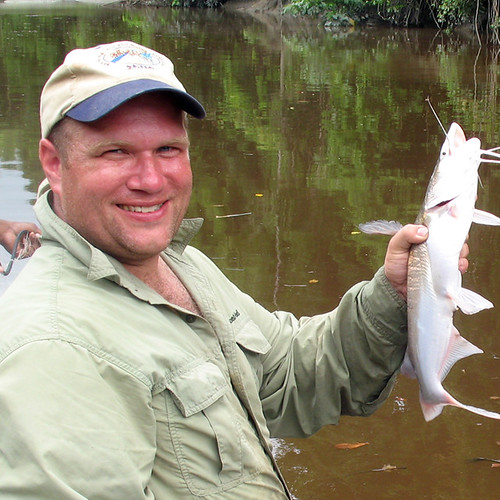Armbruster named director of the Auburn University Museum of Natural History
Article body
Auburn Professor Jonathan Armbruster has been named the new director of the Auburn University Museum of Natural History in the College of Sciences and Mathematics. His term began April 1.
Armbruster joined Auburn in 1998 as an assistant professor and was named an associate professor in 2003 and an alumni professor in 2007. He has served as curator of the museum's fish collection, where he has grown the collection from 25,000 jars to 65,000, obtained a specimen from every continent and developed online searching capabilities through a database system.
His area of research involves the systematics, ecology and functional morphology of fishes, particularly suckermouth armored catfishes, or Loricariidae, the largest family of catfishes in the world, also known as plecos in the aquarium trade. He is involved in survey work of several regions of South America, including Guyana and Venezuela, and also works on local projects involving ecology, behavior and systematics of fishes.
Recently, Armbruster began collaborative work in a worldwide project, "All Cypriniformes Species Inventory," which facilitates taxonomic work on minnows. His lab is particularly interested in the barbs of Africa and relationships of taxa worldwide. As part of this study, he has built a global database of minnow morphology and will use the information to explore aspects of the evolution of cypriniform ecology and functional diversity.
"I have been striving to make the collections at Auburn University into a museum since I arrived in 1998," said Armbruster. "Now that Dr. [Jason] Bond has ushered us into a new building and upped our community presence, the question becomes what to do next. I hope to begin a series of initiatives in teaching and outreach over the next couple of years to further cement the museum's position in the Auburn University community and beyond."
Armbruster received his bachelor's and doctorate degrees from the University of Illinois. Before his time at Auburn, he worked as a postdoctoral fellow at the Smithsonian Institution.
Throughout his career, Armbruster has secured a number of research grants from the National Science Foundation, Alabama Department of Conservation and Natural Resources and National Geographic, among many others.
Aside from his extensive research, Armbruster has instructed many undergraduate and graduate-level courses including comparative anatomy, evolution and systematics and systematic ichthyology. Armbruster has guided many graduate students to make new discoveries and publish their own work.
He has given a number of lectures, received numerous awards for teaching and research, participated in many outreach events and authored dozens of publications. He garnered international media attention in 2015 after naming a previously unknown species of catfish in honor of the Star Wars character, Greedo.
Related Media
Media interested in this story can contact Communications Director Preston Sparks at (334) 844-9999 or preston.sparks@auburn.edu.
Auburn University is a nationally ranked land grant institution recognized for its commitment to world-class scholarship, interdisciplinary research with an elite, top-tier Carnegie R1 classification, life-changing outreach with Carnegie’s Community Engagement designation and an undergraduate education experience second to none. Auburn is home to more than 30,000 students, and its faculty and research partners collaborate to develop and deliver meaningful scholarship, science and technology-based advancements that meet pressing regional, national and global needs. Auburn’s commitment to active student engagement, professional success and public/private partnership drives a growing reputation for outreach and extension that delivers broad economic, health and societal impact.





